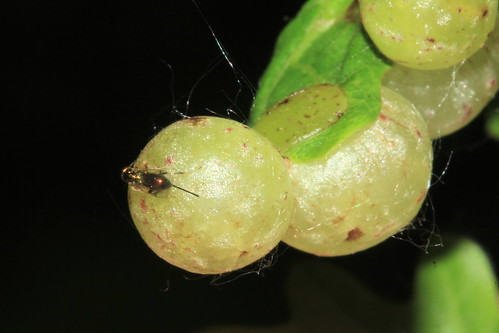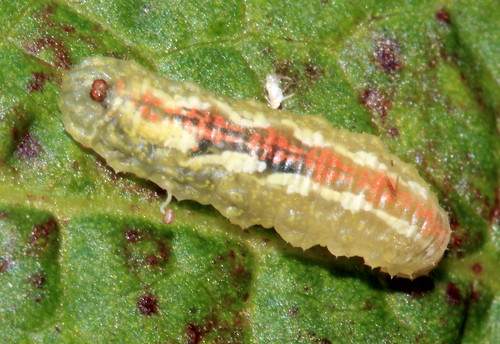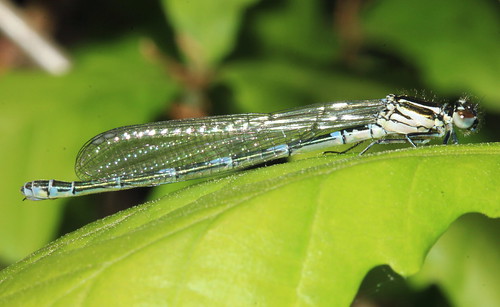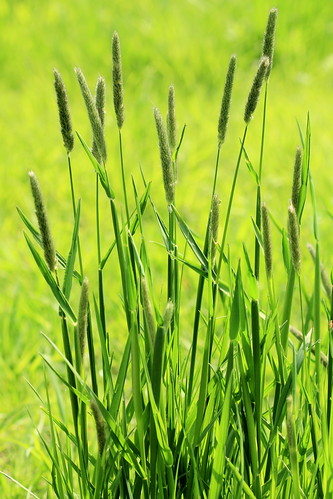UPDATE April 2015 NEWS NEWS Things have taken a dramatic turn with HOS Head Of Service Mark Thompson attempting to develop the Nature Reserve as a business venture and theme park . The process appears to have been approved and stonewalled through without regard to due process and without due regard to specific habitat knowledge . Additionally a series of press releases where made which are highly inaccurate outside Cabinet , creating bias and undermining process . The Authority also appear to be operating a process of exclusion and denying Stake Holder Voluntary Groups critical facilities on site FEET - Aim to Get Able and Disbled Children onto the Reserve and CBWG Undertake vital conservation work in the depth of winter and need similar facilities . It is not the first time the authority has resorted to such tactics RE the £6 million pound grant to Shibden Park a gift in trust given to the poor people of Halifax under a covenant made by the Listers refusing shelter to wheelchair users in the visitor and interpretation centre which in fact is commercially leased as a cafe for 289 dys per year viz Car parking Charges contrary to the ethos of the covenant which double during term time - dispicable. This bullish behaviour of the authority needs to be taken to task and officers held accountable . Please sign the petition
Master Plan Approved Hudds Examiner
Vast Tracks of Land Yorkshire Post
Please Help This Growing Petition and Secure this neglected and abused part of our green valley as an Nature Reserve
Petition to Nominate Cromwell Bottom as a LNR
Mr Thompson would be better advised to undertaking his obligations in law to in the first instance remediate this site as a consequence of its chequerred history as landfill site which has been slowly leaching into the environment for a number of years.
Below Gas condensate being discharged directly into the Calder Contrary to EA Direction to discharge into holding Tanks - Do your Job Mr Thompson and respect the environment
FEET will run a high level media battle against Calderdale after May 7th There is absolutely nothing stopping the authority nominating it to Natural England as a site Mark Thompson clearly is playing a game with a view to furthering the energy scheme on the Calder to the exclusion of stakeholder groups
Thurs 8th May 2014
Thank you to all Groups and Individuals who participated in the Discussion Thurs 8th May 2014 relating to Cromwell Bottom LNR and capping of the unincorporated portion of the adjacent site to the LNR known as North Loop
On a VERY positive note it was good to see a level of care about the environment we live in and the difference we ALL can make in using it and protecting it and FEET note and appreciate the time , effort and long journeys everyone put in to contribute including the after hours given by Council Officers who led the meeting
We hold the view it is not about want we WANT to do with the environment but what is RIGHT for the environment
Although a first early / step the principle aim of informal consultation was North Loop and obligate work which CMBDC
has to undertake in accordance with European
legislation and UK Law being formally a Land Fill Site and to which CMBDC have to conform to schedule of completion
FEET remit includes that of the Calder which bisects the site and one of our Primary Phase 1 Recording Sites with its abundant Biodiversity record being one of the jewels in Calderdales crown and significant assestt in meeting BAP Biodiversity Action Plan targets and serving the District as a centre of ecological interest. FEET seek to engage and provide objective evidence to Natural England through the appropriate
routes to have the site upgraded from LNR - Local nature reserve to SSI - Site of Scientific interest providing a green lung for the benefit of the people of Brighouse & Elland The principle
EA ( Environment Agency) Directive
is to safely restore the site (in so far as possible ) to its original state .
We therefore with due diligence , extend our assessment,around points raised in the meeting and with a view to promoting Joined Up Thinking Between all agencies stakeholders and organisations

CROMWELL BOTTOM HAS BEEN A LANDFILL SITE IT WAS ARGUED BY CROMWELL BOTTOM WILD LIFE GROUP THAT THIS PICTURE DID NOT REFLECT THE HISTORY OF CB BECAUSE IT WAS A PICTURE OF A KNOTWEED CONTROL AREA WE ARE OF THE BELIEF THAT THE PLASTIC , WIRES BATTERIES AND RUBBISH REFLECT WHAT IS BURIED BENEATH THE LAND FILL SITE ON BOTH LOOPS CONTRARY TO THEIR ASSERTION IS WHOLLY FACTUALLY CORRECT,
WE ARE ALSO OF THE BELIEF THAT THE SITING OF THIS SPRAYING AREA IN CLOSE PROXIMITY TO THE WHEEL WASH CONTAINING NUMEROUS AMPHIBIA NEWT 228+ DOES NOT HELP FOR AVOIDANCE OF DOUBT THE MUTAGENIC FRACTIONS OF GLYCOPHOSPHATE SPAYING ON WATER TABLE AND AMPHIBIA BEING FLAGGED
Interesting feedback from you regarding Calderdale Council's recent post about the open meeting on May the 9th 2014 at the Mulberry Suite, Brighouse.
We (CB) have altered some of your statements as they are factually incorrect e.g. regarding the picture of the landfill site; this is a picture of the knotweed control area taken on March the 8th. Also the Constitution is on the Members blog. Just what relevance the issue with Shibden Park has to do with CB is odd. ++ see below
Regards
Cromwell Bottom
+ On a matter of Technical accuracy
(i) Constitution is only visible to members not those who might want to join
(ii) Those who might want to join Need to know what ethical values they are subscribing to
(iii) In its current form appears as a draft not a formalised document
(iv) Like many of the facts CB have got their dates wrong its May 8th (Thurs)
(v) It is unclear if the blog known as CBWG Blog is owned by an individual or the group . Who are CB ?
Perhaps CB might be less prescriptive and more factual in there presentation of fact
Waste Management Licence number 60801
A4 : Household, Commercial & Industrial Waste Landfill
Environmental Permit Reference number EAEPR\EA/EPR/EP3899ZU/A001
For avoidance of doubt The extent of Active Licence Boundaries can be found here
EA Whats On Your Doorstep Link
The Health and Water Quality of the River Calder bisecting the site and Calder Loops on the reserve can be accessed here
Waste Management Licence number 60801
A4 : Household, Commercial & Industrial Waste Landfill
Environmental Permit Reference number EAEPR\EA/EPR/EP3899ZU/A001
THis post was both alterred deleted from the CBWG Blog. You may be interested to know it has achieved over 800 hits to date.
1. The Stakeholder Groups or Interested parties included FEET (Freshwater Ecology Environment Trust), YW (Yorks Water) , CMBDC Calderdale Council , CBWG ( Cromwell Bottom Wildlife Group) , ATC(Alternate Technology Centre), Historic Dog walkers/ Cyclists, Local residents
2.The EA Sign Off ( Environment Agency) Key questions where asked regarding the Sign of of the designated Landfill site which for avoidance of doubt consisted of the Tag Loop - currently capped and monitored
. North Loop - the closed Access portion of the overall Landfill Site Not Currently assigned as LNR Status. For avoidance of doubt and a matter of fact reference to the EA Details above:
(i) The question will the site be signed of as a whole or has the Tag loop (Currently with LNR Status) already been signed off
(ii) whether signed off discretely
or as follows North Loop Completion is a closed Public Access Site ( until work has been undertaken)
(iii) That in itself should not preclude the Local Authority designating the Site as a LNR at an early stage. or as soon as possible . This would ensure Grant funding for any strictly Biodiversity
Aspect
of the Site. Not all of the site is actually Capped and that which remains at perimeters, riverine margins or in the uncapped portion remains an active Biodiversity Site which will rapidly establish
+ Accepted that the site may have to remain for a period to settle and engage ecological succession
without people
(iv) Access and conservation Models- Limiting
access to conservation Areas is an important aspect of maintaining the environment
and providing havens for all aspects of wildlife from invertebrates to Birds.
FEET agree with CBWG in regard to preserving N Loop integrity
on Access Issues which traditionally have been a Closed access Area to ensure all ecological aspects the reserve are furthered. we do believe there is an interim medium where the loop could have restricted and monitored
access / opening
(v) Contrary to the meeting there is a substantive remaining duty and cost to monitor for some years to come and not allegedly
we believe to allow any leachate or process to move downstream
(vi) Not discussed at any Length ( key officers not present ) Environmental Monitoring
& Related Site Interests.
The FEET director on 3 Separate occasions has requested informally basic site monitoring
information , Asssay , what for , sampling methods etc. principally
for the two potential leachate Sites ie The Tag Loop & North Loop. We are not clear what certification is in place to remove or process waste through the YW sewage systems (simply asking the authority not criticising
it)
The Tag Cut Perimeter - whilst sometime has elapsed the water course flowing in very closed proximity to The Loop , capping integrity and issues of adjacent mine run off have as I understand it not been sampled to determine
any outflow into the Calder Issues of mines may well have been inherited
but the LA would be responsible for discharging should the water course be on the reserve footprint
The Brookfoot Infills - A poorly clarified area - Substantive Volume of fly Ash was pumped into the Brookfoot Loop old gravel workings during the operation of the old Power Station. This PFA - Pulverise Fly Ash is assumed to be inert but may or may not have inherent
levels of heavy metals. Little or no comment / attention or measurement has been given to this aspect of the site which is not currently on the designated Landfill Site (Brown on map) and was inheritted from the CEGB when the power station operated .
(vii) No historic records where ever kept as to the nature of loop landfill therefore if we do not know what was in there we are likely not to know what might come of or when. Currently leachate , although I have not seen per (v) any data to satisfy the view is alledged to be insignificant
3. North Loop Work - An important and well made point related to erosion control of the North loop which unlike the capping of the Tag loop is more intimately surrounded and close to the Calder and its flow. At this juncture it would be prudent to consider erosion control measures giving the proximity to the Calder and its flood plane whilst contractors are on Site . This might include reinforcing any areas of undercutting or potential erosion as a result of the high flows near the weir or some measures of surface breaks to stop rapid run off from the slopes above the Calder .Eg Stone Gabians etc. It is not apparent as to whether that assessment or view has been taken or considered
in regard to this site.
Unsubstantiated historical reports of a ground spring onsite/ under the cap where raised..FEET touched in passing on lack of information on Quality and Source of the Soil being brought to site and any testing regimes since it appears to be coming from multiple localities
4, The Hydro Scheme . FEET in principle advocate renewable energy and the Hydro Scheme and believe a greater input by +ATC to be beneficial given their proven work in this area
+ Calderdale Community Energy is a new organisation which has been set up with the Alternative Technology Centre, Calderdale Council and Pennine Community Power with the aim of enabling the community to have ownership of renewable energy in the borough
This scheme as I understand it (and welcome input and correction) is at a feasibility stage and would involve Joint venture between the Council , Alternative Technology Centre and possibly other parties.
Our (FEET) general concern would be (i) Principally
the impact on the Flow , Ecology, and biodiversity of the River Calder (ii) Whether due to technical constraints a fish ladder or pass would be feasible . The provision of a ladder or pass (i) would need to be sufficient and fit for purpose (ii) likely cost the owner of the weir in accordance with Water directives(iii) would be a significant contribution to fish populations in the river
The Weir is Owned By Calderdale CBMDC (open to correction ) to which they have obligate duties under the various Water Directives . The provision of a fish ladder or pass would be an area that fell within the statutory
responsibility of the owner CMDC . FEET noted that the Copley Weir might be better Hydrologically Suited to such a project (Mean Flow Rates etc ),. FEET noted to the ATC that such aim might be better negotiated successfully
and facilitated
through a Section 106 Planning Inducement , given any plans to build on the extensive area near Copley Flood plain area. This technically would be a substantive development site . We would be keen to determine the owner of that weir as clearly the same obligate duties apply and would be a mutual opportunity to spend the substantial s106 negotiated . Further analysis should encompass restrictions and direction provided in the Calderdales UDP - Unitary Development Plan.
+ s106 -Section 106 agreement is an agreement put in place between the developer and community in regard to a developing a site and is part of the Planning Process
FEET raised the issue about what upstream survey work had been done for fish other than perhaps EA survey and angling records
5. Nature FEET welcomed input by Calderdale Countryside Services who are subject to the rigours of local authority cuts but remain a vital part of implementing plans . We are strongly of the belief that this Green Investment will pay significant dividents in the future setting the authority apart from other Local authorities and wherever and whenever possible the services should be encouraged albeit in assisiting officers with their time management or personal development to amke CB a place for future generations
The extent of North Loop significantly increases the footprint of the LNR. Below is the suggested scheme which in principle is GOOD . The peripheral margins of Tree Shrub layer whilst perhaps needing to be of greater width extent will aid and enable internal corridors for biodiversity to move around the site not unlike the binomics of tag loop and also provide a productive field margin . The extent of meadow could be interspersed with field shrubs layers to co-join
tree field boundaries. The location of stone piles throughout the site for invertebrates and areas of nettle are all finer planning detail but would advocate the movement or agregation stone or stone piles to areas on site where it might provide some value to larvae Solitary bees , beetles or other biodiversity and would be best implemented whilst the contractor is on site. Due thought should be given to what can be reasonably achieved in terms of reintroducing bird species that have nested in the area prior to the development of the adjacent industrial site on the opposite loop
CBMDC should take care to ensure particular
in regard to the Habitat mosaics and Compartments that a thorough understanding of the Bionomics of the Site or Species is represented through any consultation rather than take discrete single view assessment,
6. FEET have some considered
concerns with CBWG which are ongoing at the moment regarding their input and impact
on the management protocols and quality of work being undertaken on the site .This includes also a number of other administrative
issues This is being addressed internally but will be updated
For avoidance of doubt FEET are in no way connected with Cromwell Bottom Wildlife Group as of May 2014 or any policy act or omission following the resignation of the organisations regional Director from the position of Ecology and Biodiversity Advisor . For the purpose of clarity we are of the belief that the over promotion of the reserve as an internet group , the consequences of not protecting Wildlife by considered habitat management on a small and local footprint will have significant adverse consequences to the current ecological balance and to the detriment of other stakeholders in the use of the reserve ,and in a wider context as a local resource
Alteration of Blog Posts by two individuals which at that time held no constitutional basis by virtue of committtee for interference in the freedom of expression and the presentation of fact and contrary to any port folio held by them
7. Historical Dog Walkers made concern about control measures on site . The majority of all reserve users WELCOME dog walkers ( and I am pleased to be on first name terms with many of the dogs ) with the request that they adhere to simple rules which might protect Any Blind or Disabled User . Any Child or School Party, any Wildlife from adverse instincts , any nesting birds and keep the environment clean and disease free Re Dog Fowling . Again with Cyclists there is an inherent
risk that anyone partaking the quiet enjoyment of the reserve should not be knocked off by a cyclist. These are simple basic standing rules which ALREADY apply in regard to the Authorities Bye Laws . CBWG emphasised the point of Control measures being in place and the importance of respecting nesting birds during the breeding season
In the near future the Feetworks (Click Link ) Site will
(i) Host Best practice Ecological Videos of the Site (on its way)
(ii) Continue with Biological and Biodiversity recording (to be published )
(iii) to engage
an active user survey (check soon)
(iv) Run an educational programme engaging and helping local people enjoy and understand the environment
(watch our scheduled events diary)
(v) Publish A Technical Appraisal of the Site but rework this in 2 forms (a) A laymans Guide All You Need To Know About cromwell - Its History Ecology and Biodiversity including Field Guides to aiding identification and discovery in the field (b) A Professional / Technical version with objective assessment and map Mate reporting Records
(vi) seek to develop an active field point at Brookfoot Lock Cottage by raising funds on one of our exciting projects along the canal which will have a positive outcome for the Nature Reserve as a whole
I hope this is a useful benchmark in going forward . If anyone cares to email with updates , matters of fact or advancement of any issue I would be more than happy to correct , add amend this brief. which constitute the preliminary view of FEET
Best Wishes
CD
Learn More About the ATC here





















































